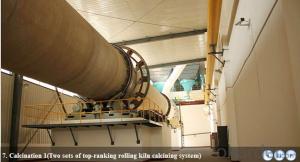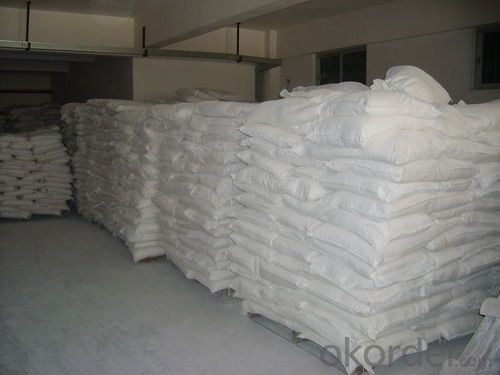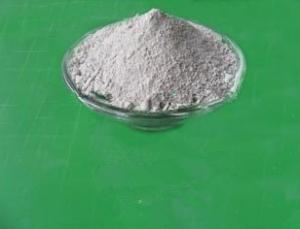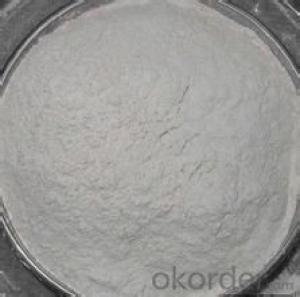ACTIVE ALUMINA SILICATE IN RUBBER INDUSTRY GRADE (GB-CKR901)
- Loading Port:
- Tianjin
- Payment Terms:
- TT OR LC
- Min Order Qty:
- 25 m.t.
- Supply Capability:
- 12000 m.t./month
OKorder Service Pledge
Quality Product, Order Online Tracking, Timely Delivery
OKorder Financial Service
Credit Rating, Credit Services, Credit Purchasing
You Might Also Like
 4.Application
4.Application
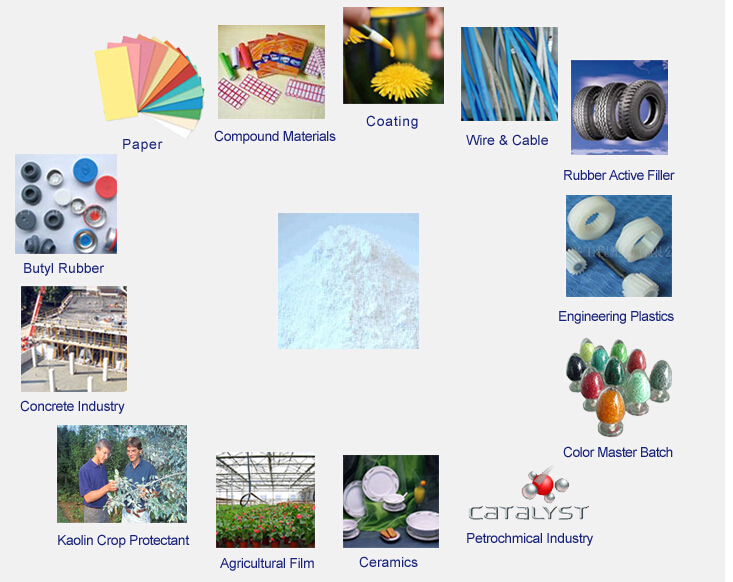
- Q: What is the use of kaolin?
- Kaolin English read as "Kaoling", after the German scholar Richthofen (Richthofen) by transliteration into "Kao-lin", introduced in Europe and America mineralogy circles, after more than one hundred years of widely adopted, and then became the world's generic name. In general the impurity kaolin ore containing a small amount of montmorillonite, illite, allophane, quartz, mica, calcite, pyrite and organic matter etc.. After manual or refined processing, kaolin can reach the theoretical composition of kaolinite. Its theoretical composition is: SiO246.54%, Al2O339.5%, H2O13.96%. The appearance of pure kaolin is white or light grey.
- Q: What's the difference between nano kaolin, washed kaolin and calcined kaolin? Where is the difference?
- Washed kaolin is the kaolin ore through water panning, coarse sand and impurities removed, usually grain size of 325 or more, 325, the size of the target is about 43 microns, that is, 43000 nm.
- Q: Barium calcium carbonate kaolin which zhegaili better
- Kaolin, calcium carbonate and talc powder as a kind of inorganic filler will affect the ink gloss, the most important influence is reflected in the kaolin, calcium carbonate and talc powder in water content, too much water, the influence of ink concentration, which will affect the use of ink printing effect, so the detection of moisture content it is necessary to.
- Q: What is the best composition of kaolin?
- Kaolin is mainly aluminosilicate, the main component of AL2 (Si2O5) (OH) 4, or written as Al2O3 2H2O 2SiO2
- Q: What kind of kaolin can burn glazed tiles?
- So you say the kaolin can burn tile, my answer is yes, but not necessary. A. can is because 1 tons of glazed tile clay, adding 1 kg of kaolin does not affect the product, but the reason is not necessary is to increase the cost of intangible kaolin.
- Q: I have kaolin, which is grey. It burns red. Do you need it?
- Your kaolin is grey and the burn is red. I guess your kaolin contains more three iron oxide
- Q: What is the good or bad of kaolin to distinguish? What is its criterion?What percentage does it contain and what element does it contain?
- Kaolin is a kind of soft clay mineral and two non clay mineral, which are mainly composed of kaolinite and sub group minerals. Kaolinite minerals are mainly composed of small tabular or tubular kaolinite minerals of less than 2 m, Al4 [Si4O10] (OH) 8. Because of its hydrous aluminosilicate chemical composition, layered structure and particle size, it has many special properties which are not available in general minerals. The extensive use of kaolin is inseparable from its excellent physical properties. Pure kaolin with high whiteness, soft and easy to disperse suspended in water, refractoriness physicochemical performance, good plasticity and high adhesion, excellent electrical insulation properties and the acid solution, good low cation exchange capacity, high.
- Q: How many eyes does the inner wall latex paint kaolin use?
- Now the latex paint is not sand grinding, direct mixing so high mesh 1000 mesh, the price is too high
- Q: Will surface treated kaolin be more insulated than untreated?
- The original peak soil has a certain insulation, if you have to deal with, and then compare, it depends on how to deal with.
- Q: Can calcined kaolin be used in PVC tubing?
- At present, calcined kaolin has been widely used in ceramics, rubber, plastics, artificial leather, cement, refractory materials, chemical industry and agriculture.
Send your message to us
ACTIVE ALUMINA SILICATE IN RUBBER INDUSTRY GRADE (GB-CKR901)
- Loading Port:
- Tianjin
- Payment Terms:
- TT OR LC
- Min Order Qty:
- 25 m.t.
- Supply Capability:
- 12000 m.t./month
OKorder Service Pledge
Quality Product, Order Online Tracking, Timely Delivery
OKorder Financial Service
Credit Rating, Credit Services, Credit Purchasing
Similar products
Hot products
Hot Searches



